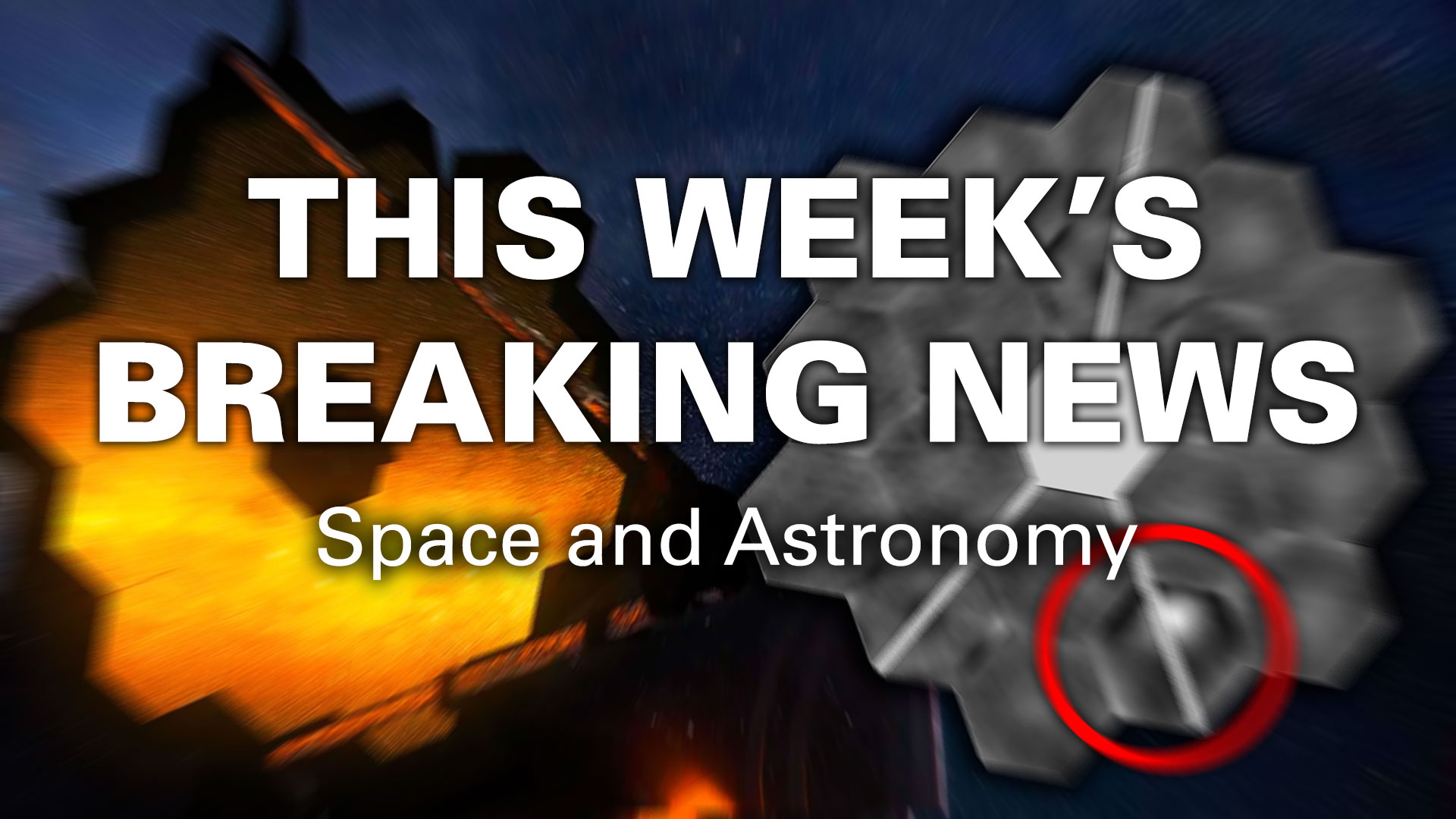JWST is doing after its micrometeorite strike, two more helicopters are flying to Mars, China will drop a 50+ meter booster… somewhere, and how do you stop the Milky Way from turning into self-replicating robot probes.
This week brought us many exciting and sometimes even scary space news. If you’re in the mood to relax and consume them in a convenient bite-size video format, you’re in luck! Because this is exactly what we have for you here:
How Bad the JWST Damage Is

A few weeks ago, we reported that JWST had taken a surprisingly large micrometeorite hit on one of its mirror segments. A new image released from NASA shows the extent of the damage. The telescope has been hit six times so far, with 5 of the 6 causing negligible damage to its optics, but the strike in May on the C3 mirror segment caused a “significant uncorrectable change.” After the strike, Webb’s operators could realign the segment to minimize the effect on its image quality.
Another Great Processed Picture from James Webb

Feast your eyes on another incredible image from the James Webb Space Telescope. This time you’re looking at galaxy IC 5332, located about 30 million light-years away. The image processing was done by Judy Schmidt, who downloaded Webb’s data in four different wavelengths and then combined them into a single image with colors that the human eye can see. You can see regions of dense star formation in the galaxy’s spiral arms, which are highlighted in the infrared spectrum.
China Adds New Module to Its Space Station

China continues the construction of its Tiangong 3 space station, this week adding a new science module called Wentian. The new lab launched on July 23rd and was docked with the station on July 25th. One final laboratory module will be attached to the station in October called Mengtian. Once it’s complete, the station will have about 1/5th the internal volume of the International Space Station, with three crew members on board.
More about China’s new module.
How Likely It Is To Die From Space Debris

Satellites and space junk are always falling back to Earth, burning up in the atmosphere. Some debris is so large, however, that it can survive the trip through the atmosphere, crashing onto the surface of the Earth. Could one of these chunks kill a person? According to a new estimate, there’s a 6-10% chance that someone somewhere will die from falling space junk in the next decade. For comparison, 13 people are killed yearly by falling vending machines.
More about space debris risks.
Two More Helicopters To Mars

After the obvious success of the Ingenuity helicopter, which went to Mars with the Perseverance rover, NASA is planning to send more of them. It will be a part of the Sample Return Mission and there will be two helicopters. One of their tasks will be collecting samples, so they might be equipped with wheels and robotic hands. That makes future Mars missions even more exciting!
More about future Mars helicopters.
We Need To Teach Robots To Die

Sending swarms of self-replicating robots to explore the Universe isn’t a new idea. It’s called Von Neumann probes. It’s actually quite clever. You can explore an entire galaxy in just several million years. But there’s a challenge that we need to solve first before we should build those. It’s teaching robots to die.
Most Sensitive Dark Matter Detector Goes Online

The hunt for dark matter continues, with astronomers scanning the skies with telescopes, physicists generating exotic particles in the Large Hadron Collider, and new experiments watching for particle collisions. A new experiment deep underground in South Dakota has come online called LUX-Zeplin. It contains a vast volume of xenon gas surrounded by detectors. If a particle of dark matter happens to collide with xenon gas, it should generate a cascade of particles that would be detectable.
NASA Needs Your Help

Compared to stars, planets are very dim. If we wanted to observe an Earth-sized world orbiting a sunlike star, we’d need to be able to block the light from the star to reveal a planet that’s a million million times less bright. An exciting solution to this problem is a starshade, a flower-like spacecraft that flies thousands of kilometres away from a telescope, blocking the light from the star, but letting the planet’s light through. NASA is looking for the public’s help to design a starshade that could fly in orbit, allowing ground-based observatories to see planets.
More about NASA’s starshade call for help.
Surprisingly Comfy Moon Lava Tubes

The surface of the Moon experiences severe temperature changes. In the daytime, the surface can heat up to 127 C and cool to -173 C at night. But new observations from NASA’s Lunar Reconnaissance Orbiter show that inside collapsed lava tubes on the Moon, the temperature always remains a comfortable 17 C. You could wear a short-sleeved shirt (inside a pressurized space suit) and wouldn’t need complex and power-hungry heaters and coolers. In the low gravity of Mars, these lava tubes can be hundreds or even thousands of meters tall, allowing room for enormous lunar bases.
More about lava tubes on the Moon.
Stay On Top Of More Space News
If you would like to get a selection of the most important space and astronomy news every week, subscribe to our Weekly Email Newsletter and get magazine-size ad-free news directly from Fraser Cain.
If you prefer the news to be videoed at you, check out our Space Bites playlist on our YouTube channel.

